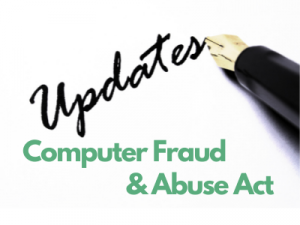awarded more than $7 million dollars to his heirs – $4 million in actual damages, and more than $3 million in Williams and Thicke’s profits. The parties are currently briefing issues to the court in advance of a court decision as to whether to order the award, and an appeal is certain.
But the reporting on the verdict, mostly by people who were interested in the case but did not understand its nuances, has been muddled. There are good reasons why – many of the issues involved are complex and unsettled. This is not my typical rant about mainstream media conflating trademark and copyright. The nuanced issues, and the conflicting public statements by the parties’ lawyers, all but assure that there will be some misunderstandings. I found enough to fit an article divided in two parts (just like the “Got to Give It Up” 45) addressing the common misunderstanding about these blurred lines:
1. Are the Sound Recordings Covered by Copyright?
Marvin Gaye’s heirs sued Williams and Thicke for copyright infringement of the composition, not the sound recording. Some journalists incorrectly concluded that this was because the sound recordings were not protected under federal law at the time Gaye recorded it. Although it’s true that the sound recording is a separate and distinct copyright from the composition (or “musical work”), and that Gaye’s heirs only sued for infringement of the composition, this was not because the sound recording wasn’t protected under federal law. Sound recordings fixed
on or after February 15, 1972 are protected under the United States Copyright Act.
There are two simple reasons why the Gaye estate did not sue for infringement of the sound recording. First, they probably did not own the copyrights, which are usually assigned by written agreement to the record company. Second, the sound recording copyright protects against unauthorized reproduction of the actual recording, but not independently created music. Simply put, a soundalike version of the song won’t infringe on the sound recording, even if they sound identical.
2. Why Couldn’t the Jury Listen to the Sound Recordings?
On a similar note, the confusion over why the sound recordings were not released at trial is a result of one of the most complicated aspects of this litigation. This issue has to do with how a copyright is obtained, and how the parties disputed the scope of Gaye’s copyright in “Got to Give it Up.”
Under the Copyright Act of 1976 (which, despite its name, applies to works from January 1, 1978 on and thus did not govern “Got to Give It Up”), a work is protected by copyright as soon as it is fixed in tangible form. A party must register the work and deposit a copy with the Copyright Office before commencing a lawsuit, but that’s not what gives an author protection. The creation and fixation does.
But under the 1909 Act, which governs “Got to Give It Up,” certain formalities must have been met in order to receive copyright protection for a work. This made things a little difficult for Marvin Gaye. For one thing, Gaye obtained copyright protection by depositing a copy with the Copyright Office. However, at that time, a recording could not be deposited as an embodiment of the composition. So Gaye deposited sheet music, even though he did not typically compose a song that way and frequently created his songs in the studio. Today, that would be less of a problem – the Copyright Office considers a recording to be a sufficient embodiment of a composition.
This led to one of the most critical arguments made by the parties, namely, whether the actual scope of Gaye’s copyright was limited to the notes on the sheet music deposited with the Copyright Office. The Thicke parties argued that it was. Gaye’s heirs argued the copyright was not so limited, and that the added elements created in the studio were part of Gaye’s copyright. Gaye’s heirs
lost this argument, and so the scope of Gaye’s copyright was limited. As a result,
the court would not allow Gaye’s heirs to present the commercially released recording to the jury, even though it would be this recording, if anything, that Thicke and Williams used as a reference point. Keep in mind that Gaye’s team wasn’t arguing that Thicke and Williams infringed on uncopyrightable elements, as some have explained, but rather that Gaye’s copyrights were not limited to the sheet music deposited with the Copyright Office. Nonetheless, the parties were permitted to submit only stripped down versions of what they believed to be the copyrightable elements of the songs.
It’s hard to believe what I’m going to say next given the result of the jury trial, but Gaye lost quite a lot when this argument was lost, and many other artist/songwriters of his era might have lost as well. Given that his copyright at issue was so limited, it would have seemed unlikely that the judge would have let the case proceed to trial, let alone that a jury would find in favor of Gaye. Because the Thicke parties intend to appeal, I would expect the Gaye team to challenge this ruling. This is a dense issue that I will discuss further in Part 2 of this series
3. Did Thicke Throw Williams Under the Bus?
It was widely reported that Thicke testified that Williams wrote all of “Blurred Lines” before he got to the studio, even though he has co-writer status on the song. To some, his saying this is some kind of treason, an opportunity for Thicke to put all the liability on Pharrell.
But, this isn’t really the case. First of all, when Thicke testified at his deposition and at trial, he was under oath and under penalty of perjury. He wasn’t charged with a crime, so he didn’t have the right to remain silent. He was obligated to tell the truth. If his testimony was accurate, then that’s what he had to say; and it’s much more risky to lie. Secondly, it’s not that unusual for a performer to take some kind of songwriting credit when their contributions were primarily the studio performance, and he is apparently embarrassed by having to admit his creative contribution was minimal.
And, perhaps most importantly, Thicke’s testimony in no way shifts liability to Williams, and I don’t suspect that was his strategy. If Thicke really wanted to turn against Williams, he would have brought a cross-claim against him instead of acting as a party of interest. He could have sued for indemnification, alleging that any infringement is attributable to Williams and therefore any of Thicke’s liability should be paid by Williams. Some contracts (like with record companies or publishers) require this kind of indemnification if the songwriter knowingly infringes another song, although I doubt that Thicke had such a contractual clause with Williams. It’s much more likely that Thicke’s testimony about the songwriting process was more about his trying to recollect the way it actually happened than his desire to throw someone under the bus.
4. Did Thicke and Williams Start the Battle?
To some observers, Thicke and Williams brought this verdict on themselves by starting the lawsuit against the Gaye heirs. But how and why did they do that?
The Thicke parties
sued for a declaratory judgment, an action that’s not unusual in copyright or trademark disputes. It means that they sought a judgment that their song did not infringe on Gaye’s, which would be binding on the Gaye heirs. That judgment would not entitle them to any monetary award, but it would have made a lot of their problems disappear.
As far as I can tell from the reports, they brought the action because the Gaye heirs (and a publisher called Bridgeport Music) were aggressively pursuing the Thicke parties and seeking compensation for the perceived infringement. And the Gaye heirs were likely making these demands through their lawyers, a formidable litigation firm. So the Thicke parties were entitled to bring the lawsuit, because if they hadn’t the Gaye parties probably would have.
This is important: you can’t just bring a declaratory judgment action out of nowhere. You can’t just say, “my song sounds like another song but I don’t think it’s infringing, so I’ll just sue the other party and get it over with.” If the other party never accuses you of infringement, there’s no case or controversy and that party can move to dismiss your lawsuit. But, even if the Gaye heirs weren’t aggressively targeting Thicke and Williams, it became a moot point because of their counterclaim for copyright infringement. After that, the parties are doing the same things they would have been doing if the Gayes had sued first, except for the confusion that arises because the Thicke parties are identified “plaintiffs” and the Gayes as “defendants.
5. Did the Jury Reach Its Decision Because They Didn’t Like Robin Thicke?
The Thicke parties, and Thicke in particular, became fairly unpopular in the public eye throughout the course of this litigation. Some think that the jury’s dislike for Thicke, who seemingly disclaimed any participation in composing his greatest hit, was an easy target for a vengeful jury. Perhaps that’s true. I don’t know what exactly led the jury to reach its decision. But this is precisely my point. Until we hear from the jurors, I don’t think any of us know for sure.
I like to think that jurors try hard to follow instructions, but some believe this a naive view. It’s more common to think that jurors, and even judges, see only good guys and villains. To them, Marvin Gaye the soul great versus Robin Thicke the vanilla appropriator was an ideal fit for this model.
But one part of the
jury verdict tends to disprove this theory: the jury found that Thicke’s (and Williams’) infringement was not “willful.” This means, the jury held that the parties infringed without knowing that they had infringed the copyright.
For greater insight into what the jury might have considered, you have to look at more than just the evidence at trial, and review the
instructions given to the jury. The key to copyright infringement, as explained in Instruction No. 43, is substantial similarity. Take a look at this instruction: it’s quite complicated. It requires the balance of at least four totally alien concepts (not including substantial similarity or copyright itself): extrinsic similarity, intrinsic similarity, quantitative importance, and qualitative importance. And all of this must be analyzed based on the detailed and conflicting expert reports submitted at trial. How tricky is that? A judge decided that this was all too confusing, and instead chose to let a jury handle it – even though a jury isn’t allowed the benefit of further research into how any of these concepts are actually applied.
On the other hand,
one part of the verdict supports the theory that the jury acted outed of spite for Thicke: despite seeing evidence showing that Williams owned 65% of the composition and Thicke owned only 22%, the jury attributed more of Thicke’s profits to the infringement than to Williams. Perhaps there’s a legitimate reason for these inconsistent awards besides the jury disliking Thicke, but I don’t know what it is.
Next week I will flip over the record and discuss five more issues about the trial, including a more detailed discussion on why I could have significant implications for artists and songwriters of Marvin Gaye’s era.
Mark H. Jaffe advises clients on copyright, trademark, and other matters at Tor Ekeland, PC. He owns
“Here, My Dear” on gatefold double vinyl and the
“Got to Give it Up” 45, and genuinely likes the “GIRL” album. Mark can be reached at
mark@torekeland.com or 718-737-7264, and his twitter feed is
@MarkJKings.]]]]> ]]>




